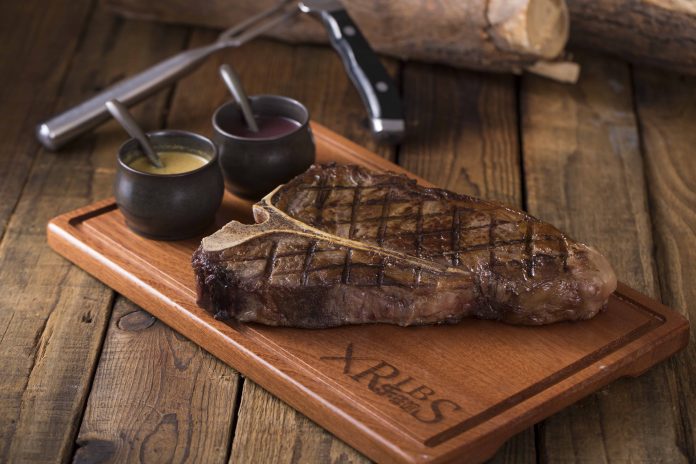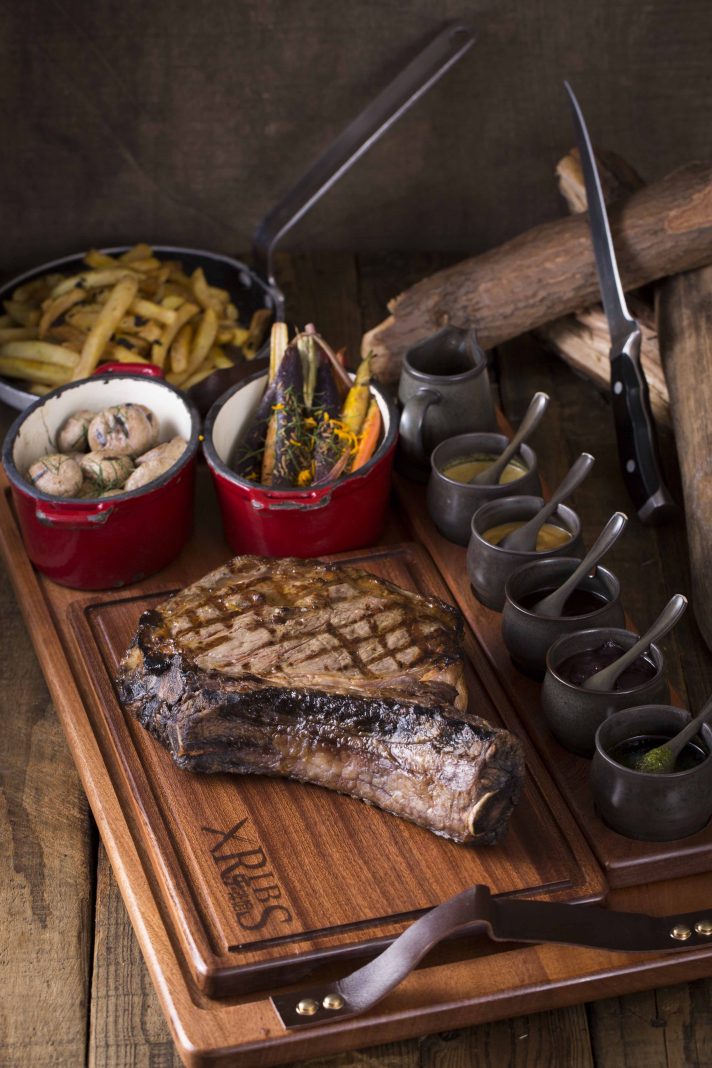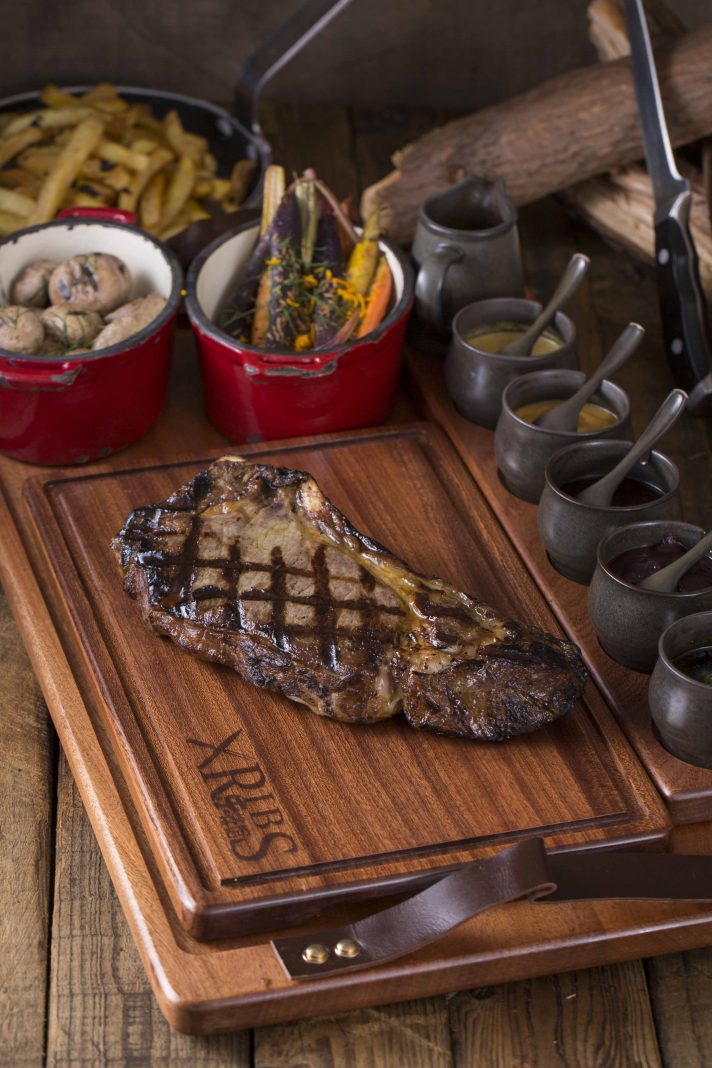
RIBS presents a brand-new menu featuring nobles of steak, 35-day dry aged Australian Wagyu beef for the first time in the entire Guangzhou.Three types of dry aged Austrailian Wagyu beef steak, four types of 300-day grain fed Australian Black Angus steak, selected ribs, and a lot more exciting culinary delights presented by Mr. Scott Henderson, Executive Chef of Shangri-La Hotel, Guangzhou. Chef Henderson especially designs the dry aged steak courses in a sharing manner to highlight RIBS’ atmosphere as chill-out-in-style with business associates, friends and families. This menu is Chef Henderson’s grand debut to Canton, which resonates with his culinary expertise over the past twenty years across four continents.

WHAT is the 35-Day Dry Aged Australian Wagyu Beef
The dry aging process originated in the United States while beef connoisseurs were in search of perfect meat flavor and texture. To yield the best dry aged beef, patience is not enough, the process requires precision, an eye to pick the right meat and a mindset to bear a high cost. The efforts and time invested are always worthwhile for the dry aged beef is often treasured as nobles of steak.
For those who are not familiar with the dry-aging process, it is a method to store big chunks of various beef cuts in an environment with controlled temperature (0-4 degrees celsius), humidity (80%) and good ventilation. Too warm and the meat will spoil, too cold and it will freeze, stopping the aging process. This aging process also needs a humidity of about 80% to reduce unnecessary water loss. Only the higher grades of meat can be dry aged, as the process requires meat with a large, evenly distributed fat content. To control bacteria, it needs a constant flow of air all around the meat, which means it needs to be hanging in a well-ventilated space. The last and most important ingredient in this process is an experienced production team to keep a close eye on the aging meat.
The process of dry-aging usually also promotes growth of certain fungal (mold) species on the external surface of the meat. This does not cause spoilage, but rather forms an external “crust” on the meat’s surface, which is trimmed off when the meat is prepared for cooking. These fungal species complement the natural enzymes in the beef by helping to tenderize and increase the flavor of the meat.
What the aging process does to the beef is firstly the loss of moisture in the meat creates a greater concentration of beef flavor and taste which is often described as the cheesy aroma; secondly, the beef’s natural enzymes break down the connective tissue in the muscle, which leads to more tender beef.
When it comes to sourcing the best beef for the dry-aging process, Chef Henderson looks for a number of factors: breed, condition of the farm, raising method, cuts, texture and flavor. Chef Henderson chooses Killara Wagyu beef specifically for RIBS. Raised on the plains of Northern and Central New South Wales, Australia, the cattle are carefully fed on a specially designed diet of grains with no added hormones. This formulated diet allows the cattle to grow happily on a vast ranch while generating a high marbling characteristics. The AUS-MEAT beef quality grading system rates Australian Wagyu beef between 0-9, this means, the more marbling character displayed within the ribeye muscle, the higher in score. Chef Henderson only select prime cuts, i.e., ribeye, striploin and porterhouse, with marbling score of 4-5, which is in perfect balance of fat and fiber for a dry-aging process to further enhance its flavor and tenderness.
The cost of dry aging process is high since investment for maintaining a stable environment with controlled temperature and humidity is high. The longer the aging process goes, the more loss in meat weight due to evaporation. Once the aging process is completed, Chef Henderson and the team will have to trim off the rusted outer layer. In fact, the entire process requires constant attention and care from the culinary team to ensure the best meat quality. Apart from the specialized fridge installed with ultraviolet light to control bacteria is used, the culinary team strictly follows the standards of Shangri-La Food Safety Management System. Twice a day the designated culinary staff members are assigned to check on the beef and monitor the real time temperature and humidity readings. In addition, the Hygiene Manager will do regular spot check on the beef and send samples to licensed third party organization to go through food hygiene check, including bacteria level.
What is the best way to cook a dry aged beef steak? Remember Chef Henderson’s second culinary principle, using simple cooking methods to bring out the best of the quality ingredients. For these sumptuous prime beef cuts, a simple roast in the dedicated stone oven is definitely going to optimize its flavor. One small tip offered by Chef Henderson is to roast it with the bone, as this will give the meat a distinctive aroma. To make a great party, for a sharing portion among 2-5 people, each cut is served with side dishes of truffle fries, roasted carrots and sautéed mushroom. For those who are in favor of beef with higher marbling score, Chef Henderson recommends M9 steak. It requires no aging process for its high level of fat, simply sear or lightly grill an M9 steak will satisfy the palates that love the greasy beefy flavor.

RIBS, Shangri-La Hotel, Guangzhou
NO.1 Hui Zhan Dong Road, Hai Zhu District
tEL: +8620-8917 8888
www.shangri-la.com





